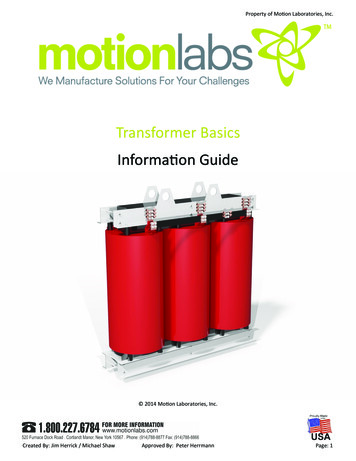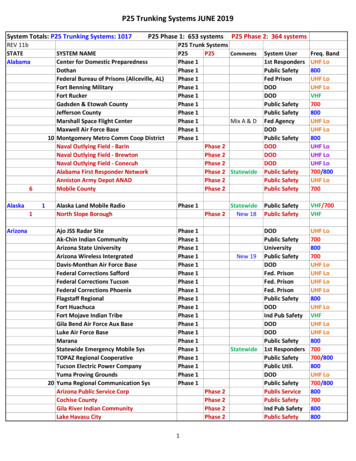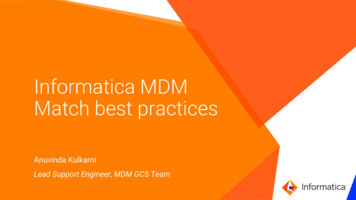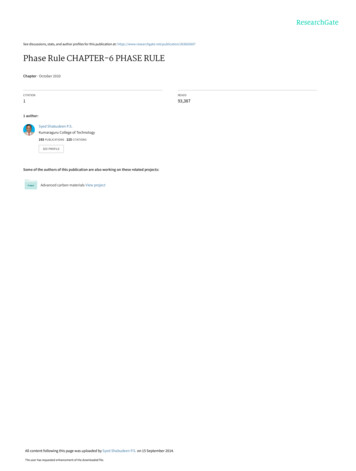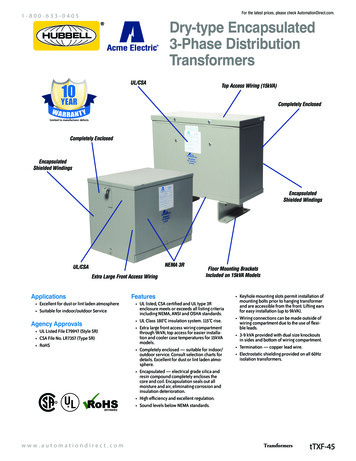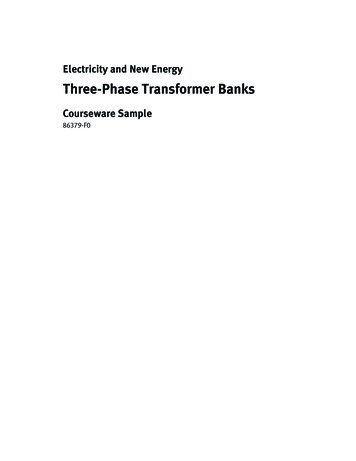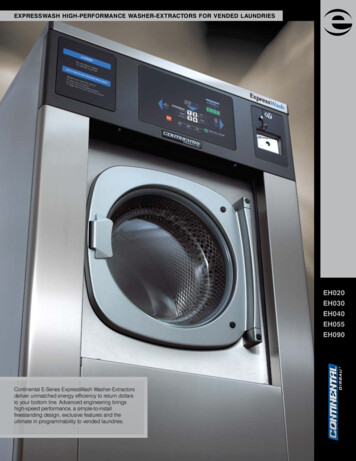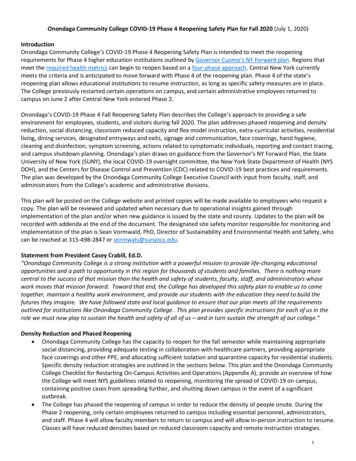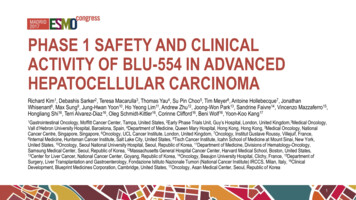
Transcription
PHASE 1 SAFETY AND CLINICALACTIVITY OF BLU-554 IN ADVANCEDHEPATOCELLULAR CARCINOMARichard Kim1, Debashis Sarker2, Teresa Macarulla3, Thomas Yau4, Su Pin Choo5, Tim Meyer6, Antoine Hollebecque7, JonathanWhisenant8, Max Sung9, Jung-Hwan Yoon10, Ho Yeong Lim11, Andrew Zhu12, Joong-Won Park13, Sandrine Faivre14, Vincenzo Mazzaferro15,Hongliang Shi16, Terri Alvarez-Diaz16, Oleg Schmidt-Kittler16, Corinne Clifford16, Beni Wolf16, Yoon-Koo Kang171Gastrointestinal Oncology, Moffitt Cancer Center, Tampa, United States, 2Early Phase Trials Unit, Guy’s Hospital, London, United Kingdom,3Medical Oncology,Vall d’Hebron University Hospital, Barcelona, Spain, 4Department of Medicine, Queen Mary Hospital, Hong Kong, Hong Kong, 5Medical Oncology, NationalCancer Centre, Singapore, Singapore, 6Oncology, UCL Cancer Institute, London, United Kingdom, 7Oncology, Institut Gustave Roussy, Villejuif, France,8Internal Medicine, Huntsman Cancer Institute, Salt Lake City, United States, 9Tisch Cancer Institute, Icahn School of Medicine at Mount Sinai, New York,United States, 10Oncology, Seoul National University Hospital, Seoul, Republic of Korea, 11Department of Medicine, Divisions of Hematology-Oncology,Samsung Medical Center, Seoul, Republic of Korea, 12Massachusetts General Hospital Cancer Center, Harvard Medical School, Boston, United States,13Center for Liver Cancer, National Cancer Center, Goyang, Republic of Korea, 14Oncology, Beaujon University Hospital, Clichy, France, 15Department ofSurgery, Liver Transplantation and Gastroenterology, Fondazione Istituto Nazionale Tumori (National Cancer Institute) IRCCS, Milan, Italy, 16ClinicalDevelopment, Blueprint Medicines Corporation, Cambridge, United States, 17Oncology, Asan Medical Center, Seoul, Republic of Korea1
DISCLOSURES BLU-554 is an investigational agent currently in development by Blueprint MedicinesCorporation (Blueprint Medicines) Dr Richard Kim is an investigator for Blueprint Medicines’ ongoing Phase 1 studies inadvanced HCC Dr Richard Kim has the following disclosures: Research: Blueprint Medicines, Bayer, BMS and Eisai Consultant: Lilly, BMS, Eisai, Bayer Speaker: LillyHCC, hepatocellular carcinoma2
HEPATOCELLULAR CARCINOMA (HCC) AND FGF191-4FGF19 - a potential HCC driverHCC is a worldwide medical needFGF19FGFR4 775,000 cases/year 720,000 deaths/yearTreatment for advanced diseasesorafenib1st line regorafenib2nd lineMulti-kinase inhibitors provide OS 1 yearKLBFGF19 IHC 30% HCCFGF19 FISH 7% HCC FGF19 is a mitogen that signals via FGFR4 and KLB Normal liver and HCC express FGFR4 and KLB Aberrant FGF19 expression may drive HCC andconfer poor prognosisFGFR4, fibroblast growth factor receptor 4; FGF19, fibroblast growth factor 19; FISH, fluorescence in situ hybridisation; IHC, immunohistochemistry; KLB, klotho-β3
BLU-554: A POTENT AND HIGHLY SELECTIVE FGFR4 INHIBITOR FOR HCCLIX-066 PDX modelFGF19 overexpression without amplificationSorafenibRegorafenibTumor volume (mm3)BLU-554VehicleBLU-554 10 mg/kgBLU-554 30 mg/kgBLU-554 100 mg/kgBLU-554 200 mg/kgSorafenib 40mg/kg1,00050000TEL-FGFR4IC50 nM CellularBLU-554Type 1IrreversiblesorafenibType 2Reversible4,142regorafenibType 2Reversible3,021Kinome illustration reproduced courtesy of CSTI (www.cellsignal.com).Sorafenib QD (once daily) dosing, BLU-554 BID (twice daily) dosing3.5510152025Hep3B xenograft modelFGF19 overexpression with amplification2,000Tumor volume (mm3)InhibitoryMechanism1,5001,0005000051015Study days20255
BLU-554: FIRST-IN-HUMAN STUDYKey objectives Define MTD, safety profile, pharmacokinetics and pharmacodynamics Assess preliminary anti-tumor activity in relation to FGF19 IHC and FISH statusPart 1: Dose escalation – completedAdvanced HCC Child Pugh AECOG PS 0-1No ascites prior sorafenibMTDPart 2: Dose expansion – enrollingIHCFGF19 IHC (n 50)Retrospective FGF19 FISHFGF19 IHC- (n 15) 3 3 dose escalation (140-900 mg PO QD) 600 mg established as MTDNCT02508467ECOG PS, Eastern Cooperative Oncology Group performance status; MTD, maximum tolerated dose5
FGF19 IMMUNOHISTOCHEMISTRY (IHC) IDENTIFIES ABERRANTPATHWAY ACTIVATIONCentral Laboratory IHCIHC-negative0%Aberrant pathway activation in 27%300IHC 1%277107/395 FGF19 IHC 1%IHC 15%IHC 50%Number samples analyzed25020015010710050110FGF19 IHC-FGF19 IHC Not evaluableData are preliminary as of data cut off: 18 August 20176
PATIENT DEMOGRAPHY AND BASELINE CHARACTERISTICS Predominantly 2nd line/post-sorafenib patient population IHC : more MVI* and higher AFP**Parameter, n (%)Age – years, median (range)Gender – maleAll patients, N 77n 25 escalation; n 52 expansion61 (18–85)60 tastatic Disease61 (79)FGF19 IHCIHC 1% (IHC )IHC 1% (IHC-)Unknown44 (57)28 (36)5 (6)(13)(47)(13)(27)Data are preliminary as of data cut off: 18 August 2017AFP, alpha-fetoprotein; MVI, macrovascular invasion; TACE, transarterial chemoembolisationParameter, n (%)All patients, N 77n 25 escalation; n 52 expansionFGF19 FISHFISH FISHUnknownPending558113(6)(75)(14)(4)Prior TherapySurgical resectionRadiotherapyTACE / embolizationImmunotherapynivolumabKinase inhibitorsorafenibSystemic )(91)FGF19 IHC FGF19 IHC-MacroVascular Invasion*18 (41)5 (15)AFP 400 (ng/mL)**27 (61)8 (24)7
BLU-554 PHARMACOKINETICS AND PHARMACODYNAMICSSteady state (C1 D15)901000XenograftEfficacyCminAUC 73,500 ng*h/mLCmax 8,100 ng/mLTmax 2h, t ½ 17 hRelative change from baseline(arbitrary units)Plasma Concentration (ng/mL)10000Blood PD biomarkers60300-30-60100061218CholesterolBile acids (C4)FGFR4FGF 19Feedback loop Steady state exposure provides Ctrough Cmin associated with xenograft efficacy Long half life supports QD dosing Blood biomarkers demonstrate consistent pathway modulationData are preliminary as of data cut off: 18 August 2017PK and PD represent 600mg expansion doseAUC, area under the curve; C1, Cycle1; Cmax, maximum blood plasma concentration; Cmin, minimum blood plasma concentration; D15, Day15; PD, pharmacodynamics; PK, pharmacokinetic; QD, one a day; Tmax, time to maximum blood plasma concentration8
RADIOGRAPHIC RESPONSE IN POST-SORAFENIB HBV-RELATED HCC8-34% PRWeek 0Baseline16-49% PR24-49% PR32PDWeek 16BaselineIHC FISH ctDNAMeasureBaselineWeek 8P53 Q192*Allele fraction31.1%UndetectableFGF19 ampCopy number8.3UndetectablectDNA, circulating tumor PD, progressive disease; PR, progressive response9
RADIOGRAPHIC RESPONSE IN POST-SORAFENIB NON-VIRAL HCCWeek 0Baseline8-26% SDBaseline16-44% PR24-45% PR32PDWeek 16-44% PRIHC FISH-SD, stable disease10
PR; CR0; 0SD15 (52)PD14 (48)CRPRPRPRPRPRBest Responsen (%)PR; CR5 (13)*; 1 (3)SD20 (53)PD12 (32)FISH n (%) ORR 6/38 16% (6-31% 95%CI) per RECIST 1.1 PFS 3.7 months (2.8 – 7.3 95% CI) Activity against FISH- and FISH FISH Best ResponseFGF19 IHC FISH ORR 0% per RECIST 1.1 PFS 2.1 months (1.8 – 5.6 95% CI -100FISH FGF19 IHC -/UnknownFISH 100Maximum Reduction – sum of diameter change from baseline, %Maximum Reduction – sum of diameter change from baseline, %IHC-POSITIVITY ENRICHES FOR RADIOGRAPHIC TUMOR REDUCTION AND RESPONSE*4 confirmed PR; 1 PR/1 CR, unconfirmedData are preliminary as of data cut off: 18 August 2017CR, complete response; ORR, overall response rate; PFS, progression-free survival;12
FGF19 IHC TUMOR GROWTH KINETICS PER PRIOR KINASEINHIBITOR TREATMENTEncouraging duration of treatment, particularly in kinase inhibitor naïve patients80xxx6040xxxx20N 323.7 (0.2-7.7) months on treatment8 ongoingxxxx xxxx0xxx-30-60xxx-80-100100Maximum reduction – sum of diameter %change from baselineMaximum reduction – sum of diameter %change from baseline100N 55.4 (2.4 – 12.3) months on treatment2 ongoing 11 months806040x200xx-30-60-80-100Scr C1C3C5C7C9C11C13Study durationPrevious kinase inhibitor treatmentC15FISH-/UnknownScr C1C3FISH C5C7C9Study durationC11C13No prior kinase inhibitor treatmentData are preliminary as of data cut off: 18 August 201712C15
ADVERSE EVENTS*Most AEs are Grade 1 or 2: manageable on-target toxicitySafety population, N 77Preferred term, n (%)Patients with at least 1 Related AEDiarrheaNauseaVomitingASTALTFatigueDecreased appetiteBlood bilirubin increasedAbdominal painAnemiaBlood alkaline phosphatase increasedPruritusSeverityAny AE75 (97)55 (71)32 (42)28 (36)26 (34)25 (32)22 (29)14 (18)13 (17)12 (16)11 (14)10 (13)8 (10)Grade 1Grade 2Grade 3Grade 4Grade 536 (47)21 (27)19 (25)7 (9)7 (9)9 (12)6 (8)4 (5)5 (6)4 (5)2 (3)6 (8)13 (17)9 (12)5 (6)5 (6)7 (9)11 (14)8 (10)7 (9)6 (8)2 (3)5 (6)2 (3)6 ( 8)2 ( 3)4 ( 5)12 (16)10 (13)2 (3)02 (3)1 (1)5 (6)3 (4)00002 (3)1 (1)0000000000000000000 2 DLT at 900 mg (1 Gr 3 fatigue lasting 7 days; 1 Gr 3 abdominal pain) BLU-554 discontinuations: PD n 42, AE n 11, investigator’s decision n 2, withdrew consent n 3*Treatment-related adverse events reported in 10% patients; AE, adverse event; ALT, alanine aminotransferase; AST, aspartate aminotransferase; DLT, dose-limiting toxicity13
CONCLUSIONS BLU-554 provides acceptable tolerability, pathway engagement and anti-tumor activity inheavily pre-treated FGF19 IHC patients Aberrant pathway activation (FGF19 IHC ) demonstrated in 30% of HCC patients BLU-554 demonstrates clinical activity regardless of HCC etiology and prognostic factors These data validate FGFR4 as a therapeutic target and FGF19 IHC as selection markerfor pathway activation in advanced HCC Planning is underway for further clinical development of BLU-554 in kinase inhibitor naïve,FGF19 IHC HCC alone and in combination with immunotherapy14
ACKNOWLEDGEMENTSWe thank the participating patients, their families, all study co-investigators, and research co-ordinators at thefollowing institutions: Moffitt Cancer Center, Tampa, United States Guy’s Hospital, London, United Kingdom, Vall d’Hebron University Hospital, Barcelona, Spain Queen Mary Hospital, HongKong, Hong Kong National Cancer Center, Singapore, Singapore UCL Cancer Institute, London, United Kingdom Institut Gustave Roussy, Villejuif, France Huntsman Cancer Institute, Salt Lake City, United States Asan Medical Center, Seoul, Republic of Korea Tisch Cancer Institute, Icahn School of Medicine at Mount Sinai, NewYork, United States Seoul National University Hospital, Seoul, Republic of Korea Samsung Medical Center, Seoul, Republic of Korea Massachusetts General Hospital Cancer Center, Boston, United States Center for Liver Cancer, National Cancer Center, Goyang, Republic ofKorea Beaujon University Hospital, Clichy, France Fondazione Istituto Nazionale Tumori (National Cancer Institute) IRCCS,Milan, ItalyWe also thank Samantha Clark, BSc, of iMed Comms, an Ashfield company, who provided editorial writing support funded by Blueprint Medicines15
REFERENCES1.2.3.4.Llovet JM et al (2016) Nature Reviews Disease Primers 2: 1–23Miura S et al (2012) BMC Cancer 12:56Hyeon J et al (2013) Dig Dis Sci 58:1916-1922Schultze et al. (2015)Nature Genetics 47:505–51116
BLU-554 Type 1 Irreversible 3.5 sorafenib Type 2 Reversible 4,142 regorafenib Type 2 Reversible 3,021 LIX-066 PDX model FGF19 overexpression without amplification 0 m 3) Hep3B xenograft model FGF19 overexpression with amplification Study days 2,000 1,500 1,000 500 0 5 m 3) 0 10 15 20 25 0 5 10 15 20 25 1,000 500 Vehicle BLU-554 30 mg/kg BLU-554 .

